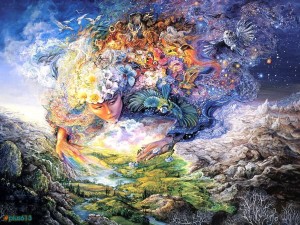Introduction
Hello there, please come in and sit. I understand your teacher has found time for you to learn the secrets of the Wheel. Don’t let this large tomb scare you. I promise it’s not as intimidating as it looks. Please pull up a seat, grab your paper, ink, and quill and I shall educate you all about the Burning Wheel.
We shall begin at the beginning as a history of a subject helps us understand it and makes us less likely to repeat past transgressions. From there we shall take a short walk around the Hub of the Wheel which will explain the draw of this tomb. Then we shall pack our faithful steeds and travel the lands and see the different types of characters one can meet.
You don’t have a faithful steed? No worries, I can supply one.
Along the path you will see the many styles and Paths that Life can take for the denizens of our world. Along with this will be the List of Traits and Skills that these different people use in their daily lives.
Past these areas, we will arrive at the Rim of the Wheel. This is where lesser known and utilized knowledge can be found. It is still good to know and have an understanding of, even if one may never have need of it.
Finally, upon returning here, we will conclude our journey with a celebratory toast and good food. After all traveling and learning can make one hungry, can they not?
History

Created by Luke Crane, The Burning Wheel is held in high esteem within many RPG circles. The Burning Wheel was first released in 2002 as two volumes: The Burning Wheel Fantasy Roleplaying System and The Burning Wheel Character burner. At the time, its approach to fantasy fiction in a pen and paper RPG setting was fresh. It put character at the forefront of the story in ways that hadn’t been done before. Through the Beliefs and Intents System players are constantly working toward goals and experience challenges to overcome along the way. Such a mechanic has shown up in numerous other games since, from Apocalypse world with the History stat, to Onyx Path’s Storyteller System and its Aspirations mechanic.
Later these two volumes were published with a crisper system in the Burning Wheel Gold Edition book.
The Burning Wheel is inspired by the settings and themes from fantasy fiction’s biggest names, Tolkien, Ursula K. Le Guinn, and Stephen Donaldson. As mentioned in the beginning of the Gold edition, the game is also heavily influenced by the historical accounts of Barbara Tuchman and Desmond Seward. This helps to create a vibrant, yet dirty and complicated world. A world that is not listed in the rulebook, per se.
The “world” is created via interaction between the GM and her players. Be this law, beliefs, or otherwise, the world is developed through GM and player discussion. This was intentional. Players and GM’s are treated with a high level of respect out the gate by clearly stating that any world the authors could create and put into the book would pale in comparison to what the players can generate.
Getting things done: Dice, Difficulty, and Obstacle
Like any RPG, Burning Wheel uses dice as a resolution mechanic. Nothing new there. It uses standard six-sided dice. Again nothing too foreign. It’s approach to how the dice are used and the way tests are marked is a bit different. So let’s look at that.
The Spokes of the Wheel
One of the most important concepts to The Burning Wheel is an idea called ‘Intent and Task’. When a player wants to accomplish an action, the GM should ask directly, “What is your Intent? What do you want to see happen?” Based on the player’s response, the task should become clear. “I kill him” is an appropriate intent. The GM then needs to pull out a little more information to get to the task. “I strangle him with my bare hands” or “I stab him with my knife” would imply a brawling or knife test.
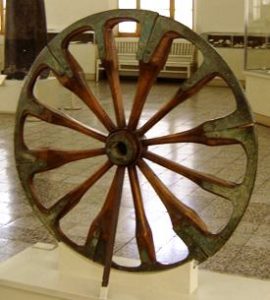
As the above examples show once a character’s intent has been stated, the GM can apply the proper task. Along with determining the difficulty of the task known as the obstacle, this sets up the ability to roll the dice and determine the outcome of the role. Let’s look at an example.
Here is how a skill could appear on your character sheet:
Inconspicuous B3
Let’s break this down. The first part is the skill name: Inconspicuous. The second: the shade of the skill. Skills are broken down into three different shades. These are Black, Grey, and White. The shade of your skill determines what number on a d6 is a success.
Black: 4 and up
Grey: 3 and up
White: 2 and up
It should be noted, that grey and white shades are advanced aspects and come into play rarely.
Finally, the number 3 tells us how many dice to roll.
Determining the number of successes we need depends on the task and is decided by the GM. The difficulty is referred to as The Obstacle, often shortened to ob. The higher the obstable, the more difficult the task. So let’s look at an example.
I want to sneak up and take out a guard. Not kill them, just get past them unnoticed and out of the city walls. (note the intent here: sneak up and take out a guard, but not kill them.)

The GM decides this is a risky act, which is considered an obstacle 4 task So ze announces that getting passed the guard unnoticed would be an ob 4 Inconspicuous test. We would roll 3d6 and be looking for 4-6 on the dice. If we get 4 successes then we succeed.
But how can we get 4 successes if we only have 3 dice? There are three answers to that question:
- You get help from other players. Each player can assist with one applicable skill agreed on by the GM. When they do you receive 1 additional die to your roll.
- You can spend Artha. Artha is made of three pools. Fate and Persona can be spent to assist rolls and are used for different purposes. Fate can be spent after a roll has been made. When spending a point of Fate any die that comes up as a 6 can be re-rolled to get more successes, which are called open-ended rolls.
Persona allows you to add 1 die to your roll for each point you spend.
- You don’t. You fail, which is a good thing.
Now, why would you CHOOSE to fail? Because in Burning Wheel you have to accrue a certain number of tests to increase your statistics. There are three different types of tests that help to increase a stat. These are routine, difficult, and challenging. To increase your number from b3 to b4 requires a certain number of each type of tests. The test type (routine, difficult, or challenging) depends on how many dice you are rolling. At some point, if you want to advance, you HAVE to attempt an action that will fail.
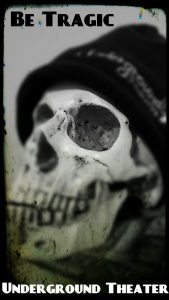
This is part of why I love Burning Wheel. The system rewards failure. In fact, you HAVE to fail in order to progress and improve your skills and stats. Now, I know failure(, in most games,) is not fun and most of the time that uncertainty is scary. That’s fine because the GM must tell you what will happen if you fail BEFORE you roll the dice. That way you can decide if you want to actually do the task. So let’s look back at our example:
GM: In order to sneak past the guard will be an ob 4 test as the guard is attentive and alert. If you pass you tell me how you sneak past them unnoticed. If you fail the guard will stop you and will send you to the dungeon.
You now know exactly what will happen. No surprises. No guesswork. If you pass you get to narrate the action as you see it unfold. If you fail the GM has told you EXACTLY what will happen. This is player agency at its finest. It allows the players to shape the story in their own words because know the effect that their actions will have on the story. At my table, we embrace failure because failure gives way to interesting situations, which gives way to plot.
Burning Wheel stresses another important thing to remember: don’t always roll dice. You only roll dice when there is an unsure element in a scene. In fact, there is a rule: “Say yes or roll the dice.” Conflict in Burning Wheel is multi-faceted.There can be fighting, duels of wits, and many other forms of conflict. (Much like life.) However, if an action is not important or inconsequential to the story simply say yes and get back on track.
In our Next Article, We’ll Discuss Session Zero and Character Creation in The Burning Wheel
Scott is a true analog gamer doing everything from pen and paper RPG’s to board games and everything in-between. He started out with Advanced D&D 2nd edition at the age of 10. From there he likes all genres and types, from the well known big names to smaller indie print publishers. Scott is Vice-President of The Wrecking Crew
*Note, all opinions are the opinions of their respective Authors and may not represent the opinion of the Editor or any other Author of Keep On the Heathlands.

 “
“

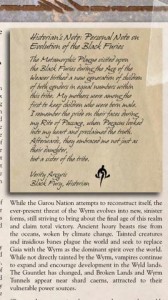
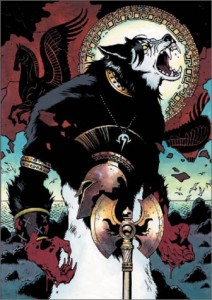
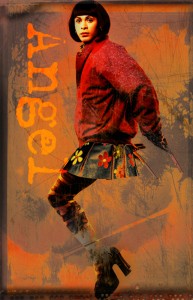 Some people would tell you visibility is an unambiguous good. I’m less certain. There are a lot of lazily-written trans characters out there. The Lazily-Written Trans Character is often a conventionally feminine trans woman. She is non-threatening and non-sexual, although she may be a sex worker.
Some people would tell you visibility is an unambiguous good. I’m less certain. There are a lot of lazily-written trans characters out there. The Lazily-Written Trans Character is often a conventionally feminine trans woman. She is non-threatening and non-sexual, although she may be a sex worker.